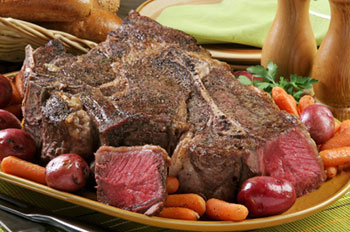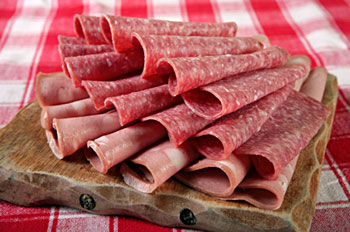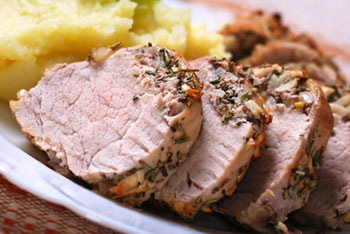Eating Healthy: the Basics
1. What is a healthy breakfast?
2. What is a healthy lunch?
3. What is a healthy dinner?
4. How much should I weigh?
5. How many calories should I be eating?
6. What is the best way to lose
weight?
7. How can I keep my weight loss
goal in mind and stay motivated?
8. What is a healthy weekly weight loss?
9. How to set weight loss goals and make
them happen
10. How to keep a food diary, and
why it is essential to successful weight loss
11. Are all fats bad for you?
12. Are saturated fats bad
for you?
13. Are
unsaturated fats good for you?
14. Are carbohydrates bad for you?
15. Is fiber good for you?
16. How to read nutrition/food labels
17. How to plan your weekly menus
18. Why should I eat less salt?
19. What
do the sodium (salt) numbers mean on food labels?
20. What is The Mediterranean Diet?
21. Why eating vegetables is good for
you
22. Why eating fruit and nuts
is good for you
23. Why are cereals and whole grains good for you?
24. What are legumes, and why are they good for you?
25. Why is eating fish good for you?
26. Which fats and oils are good for
you?
27. Are dairy products good for you?
28. Which meats should I not eat?
29. Is drinking alcohol good for
you?
30. Is it important to measure your
ingredients?
31. Are snacks good for you?
32. How to choose the right portion size
33. Can you lose weight with a smaller
plate?
34. Eat healthier by cleaning out your
pantry
35. Which oils and fats should I keep in my pantry?
35. Which oils and fats are good for you - and when should I use them?
36. Which carbohydrates are good for you?
37. What is the best chicken or turkey for you?
38. Are dairy products good for you?
39. Which nuts and seeds should I eat?
40. Is red meat like beef or pork bad or good for you?
41. Is eating dessert good or bad for
you?
42. Is drinking soda bad for you?
43. Is drinking coffee bad for you?
44. How can healthy food taste good? Part 1
45. How can healthy food taste good? Part
2
46. How to eat healthy while eating
out
47. Are vitamins and supplements necessary
to eat healthy?
48. How to eat healthy while traveling
Eating Healthy: the Basics
Is meat bad for you?
Meat in the Mediterranean Diet

Red meat is not bad for you. Bologna is bad for you. Not a little bad, but a lot bad, and this holds true for most processed meats. Eating hamburger is OK, pork chops not bad, chicken is fine, but not most deli meats. (I guess Oscar Meyer won't be sponsoring Dr. Gourmet any time soon.)
A study published in the journal of the American Heart Association, Circulation (2010;121:2271-2283), took a closer look at the connection between red meat and processed meats and heart disease and diabetes. The researchers reviewed the data from over 20 studies and grouped the respondents into rising levels of red meat consumption, from less than 1 serving per week to 1 or more servings per day. They also created similar groups for amounts of processed meats as well as a combination of both red meat and processed meats as a total.
Those who ate 1 serving of red meat per day were at no greater risk of heart disease than those who ate less than 1 serving per week. The same was true of the risk of diabetes. Each serving of processed meat (bacon, salami, hot dogs, etc.) eaten per day led to a 42% increase in risk of heart disease and a 19% increase in risk of diabetes.

Each serving per day of meat, both processed and unprocessed, tended to show a higher risk of heart disease, but these findings were strongly skewed by two studies. If those two studies were excluded, the risk fell to near normal. The risk of diabetes rose 12% for each serving of all types of meat (both red and processed, but not including poultry or fish).
Looking at the Mediterranean diet literature reveals that those cultures consume less meat and eat leaner meats than those in Western cultures. The research shows that they consume an average of 4 ounces or less of meat per day (adjusted for an 1,800 calorie per day diet). While they do consume cured meats, those are made without the amount of chemicals that are found in highly processed products such as hot dogs.
A lot of prospective research has focused on the effect of consuming less meat as well as the impact of specific types of meat. In one study, a group consuming lean beef or pork as part of a lower fat diet showed improvements in cholesterol profiles similar to those who ate fish and chicken instead. This appears to be result of the negative effect that foods higher in saturated fat have on cholesterol profiles. (Am J Clin Nutr January 2012 vol. 95 no. 1 9-16)
In studies looking at the habits of normal weight people, the difference between normal weight and overweight is as small as about 200 calories and replacing a serving of meat with a serving of fruit. (J Am Diet Assoc 2006;106;833-840)
As with other components of the Mediterranean Diet, it's not just the risk of heart disease that improves when making changes. Eating less meat and choosing meats that are lower in saturated fat is clearly linked to reduced cancer rates. One study showed that those who consumed high fat meats and processed meats had much higher rates of colon or rectal cancer. The increased rate was significant at over 40%. The group eating the most poultry and fish had reduced rectal cancer rates, with a decrease in risk of 19% and as much as a 30% lower risk of other colon cancers. (J Nutr, 2007;137(4):999-1004)
There have been similar results in research on meat consumption and other cancers, including breast cancer and skin cancer. Data from the Nurses Health Study, for example, showed a link between some types of breast cancers and eating more red meat. The association held true whether the measurement of red meat was in servings or by total weight consumed. (Arch Intern Med, 2006;166(20):2253-2259)
How to make this a part of your life is covered in detail in later essays in this series on remaking your pantry, but here are a few simple ideas for now:
When you are choosing meats, look for leaner cuts.
Make lean cuts of beef, like flank steak, top round, eye of round, and London broil your choices for red meats. Choose the leanest hamburger you can find: the lowest fat content in the grocery store. Generally this is labeled as 5% fat content, 95% lean or 95/5.

Pork can be as lean as skinless chicken. For instance, pork tenderloin has about the same calories, fat and saturated fat as a skinless chicken breast. Lean pork chops are similar and a good choice as well.
Eat red meat once a week and poultry three times over a two-week period.
There's clear research that shows eating skinless poultry reduces the amount of saturated fat in the dish. Cooking your chicken with the skin on, however, is just fine. It's been well established that cooking the chicken without removing the skin - but not eating the skin - doesn't add calories or fat to your diet, but the chicken will be more succulent.
Choosing to eat healthy means that you can make meat part of your life. Select great, lean cuts and enjoy them, but make them less a part of your life by eating more fish as well as having more meatless meals.
